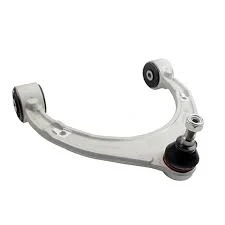
-
 Afrikaans
Afrikaans -
 Albanian
Albanian -
 Amharic
Amharic -
 Arabic
Arabic -
 Armenian
Armenian -
 Azerbaijani
Azerbaijani -
 Basque
Basque -
 Belarusian
Belarusian -
 Bengali
Bengali -
 Bosnian
Bosnian -
 Bulgarian
Bulgarian -
 Catalan
Catalan -
 Cebuano
Cebuano -
 Corsican
Corsican -
 Croatian
Croatian -
 Czech
Czech -
 Danish
Danish -
 Dutch
Dutch -
 English
English -
 Esperanto
Esperanto -
 Estonian
Estonian -
 Finnish
Finnish -
 French
French -
 Frisian
Frisian -
 Galician
Galician -
 Georgian
Georgian -
 German
German -
 Greek
Greek -
 Gujarati
Gujarati -
 Haitian Creole
Haitian Creole -
 hausa
hausa -
 hawaiian
hawaiian -
 Hebrew
Hebrew -
 Hindi
Hindi -
 Miao
Miao -
 Hungarian
Hungarian -
 Icelandic
Icelandic -
 igbo
igbo -
 Indonesian
Indonesian -
 irish
irish -
 Italian
Italian -
 Japanese
Japanese -
 Javanese
Javanese -
 Kannada
Kannada -
 kazakh
kazakh -
 Khmer
Khmer -
 Rwandese
Rwandese -
 Korean
Korean -
 Kurdish
Kurdish -
 Kyrgyz
Kyrgyz -
 Lao
Lao -
 Latin
Latin -
 Latvian
Latvian -
 Lithuanian
Lithuanian -
 Luxembourgish
Luxembourgish -
 Macedonian
Macedonian -
 Malgashi
Malgashi -
 Malay
Malay -
 Malayalam
Malayalam -
 Maltese
Maltese -
 Maori
Maori -
 Marathi
Marathi -
 Mongolian
Mongolian -
 Myanmar
Myanmar -
 Nepali
Nepali -
 Norwegian
Norwegian -
 Norwegian
Norwegian -
 Occitan
Occitan -
 Pashto
Pashto -
 Persian
Persian -
 Polish
Polish -
 Portuguese
Portuguese -
 Punjabi
Punjabi -
 Romanian
Romanian -
 Russian
Russian -
 Samoan
Samoan -
 Scottish Gaelic
Scottish Gaelic -
 Serbian
Serbian -
 Sesotho
Sesotho -
 Shona
Shona -
 Sindhi
Sindhi -
 Sinhala
Sinhala -
 Slovak
Slovak -
 Slovenian
Slovenian -
 Somali
Somali -
 Spanish
Spanish -
 Sundanese
Sundanese -
 Swahili
Swahili -
 Swedish
Swedish -
 Tagalog
Tagalog -
 Tajik
Tajik -
 Tamil
Tamil -
 Tatar
Tatar -
 Telugu
Telugu -
 Thai
Thai -
 Turkish
Turkish -
 Turkmen
Turkmen -
 Ukrainian
Ukrainian -
 Urdu
Urdu -
 Uighur
Uighur -
 Uzbek
Uzbek -
 Vietnamese
Vietnamese -
 Welsh
Welsh -
 Bantu
Bantu -
 Yiddish
Yiddish -
 Yoruba
Yoruba -
 Zulu
Zulu
Enhancing Performance with Precision Race Car Control Arms for Optimal Handling
The Importance of Control Arms in Race Car Performance
In the world of motorsports, every component of a race car plays a critical role in determining its performance on the track. Among these components, control arms are often overlooked but are essential in maintaining the car's handling, stability, and overall dynamics during high-speed maneuvers. Understanding the role of control arms in race car engineering can provide valuable insight into how these vehicles achieve remarkable performance.
Control arms, also known as A-arms or wishbones, are crucial components of a car's suspension system. They connect the chassis to the wheel hub, allowing for controlled movement of the wheel as the car navigates through various terrains and track conditions. In racing, where precision and responsiveness are paramount, control arms must be designed to handle the stresses of high-speed driving and sharp turns.
The Importance of Control Arms in Race Car Performance
Another important aspect of control arms is their role in managing suspension travel. During a race, the car encounters various forces, such as acceleration, braking, and cornering. Control arms help to absorb these forces, allowing the suspension to compress and extend as needed while maintaining stability. This motion is crucial for a race car's ability to navigate corners at high speeds without losing traction. A well-designed control arm setup helps to enhance a car's cornering ability, making it more agile and responsive to the driver's inputs.
race car control arms

Material selection is also a vital factor in the performance of control arms in race cars. Lightweight materials such as aluminum or carbon fiber are often used to reduce the overall weight of the vehicle without compromising strength and rigidity. The lighter the control arm, the lower the unsprung weight, which positively affects the suspension's ability to respond to changes in the road surface. This results in improved handling and faster lap times, two critical factors in competitive racing.
Furthermore, the design of control arms can influence the overall aerodynamics of a race car. In high-speed racing scenarios, every aspect of the car's design can affect its drag coefficient and downforce. Engineers often optimize control arm design to ensure that airflow around the suspension components is as streamlined as possible. This not only enhances aerodynamic efficiency but also contributes to better tire performance under racing conditions.
In the context of race car development, testing and refinement of control arms are an ongoing process. Teams utilize advanced simulation software and real-world testing to understand how different designs and materials perform under various race conditions. The feedback from these tests allows engineers to make iterative improvements, leading to innovation in control arm design that can significantly influence a race car's competitive edge.
In conclusion, control arms are a fundamental component of race car suspension systems that greatly impact performance, handling, and driver confidence. Their ability to maintain proper wheel alignment, manage suspension travel, and contribute to overall aerodynamics makes them indispensable in the high-stakes realm of motorsports. As technology continues to advance, the evolution of control arm design will remain a crucial area of focus for race teams striving for excellence on the track. Whether you are an engineer, a driver, or a passionate motorsport fan, recognizing the importance of control arms sheds light on the complexity and precision that defines top-tier racing.







